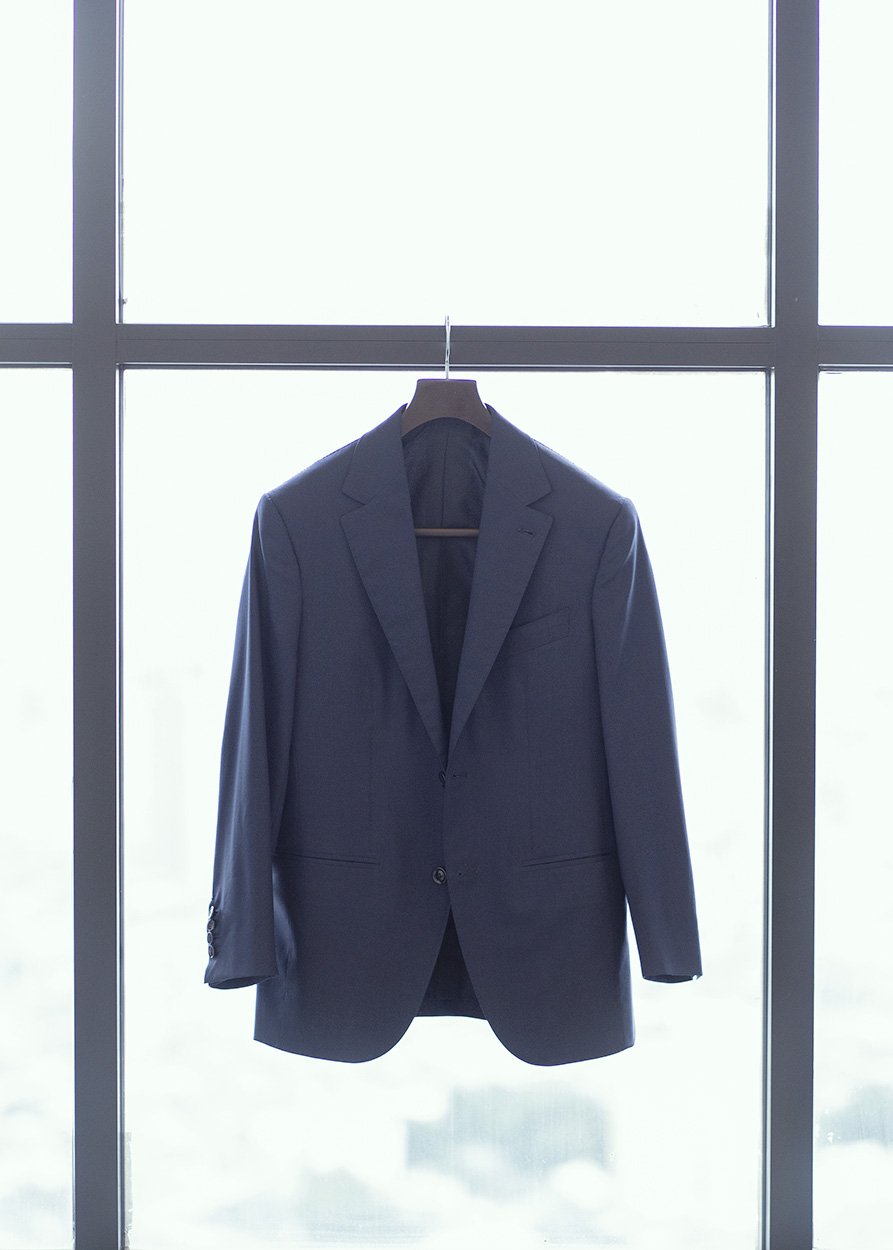Exploring the Escorial - Extreme Lightweight (7.5oz)
TCR1982 standard bespoke 'Admiral Blue' jacket in Escorial 210gms / 7.5oz.
Living in a tropical climate, the attention and demand for lightweight fabrics for jackets and suits has become increasingly apparent. A quick online search will lead you to numerous articles extolling the benefits of suits made from ultra-light wool fabrics, often woven from the finest yarns in the Super 150s to Super 210s range. (Note: While a higher thread count can signal luxury, the balance between price and practicality is debatable.)
It’s certainly true that the weight of a garment plays a significant role in the comfort it offers in a tropical climate. However, this doesn’t necessarily mean that extremely lightweight fabrics are always the best choice when it comes to achieving the most flattering or polished look in a tropical climate.
Recently, I had the opportunity to finish a jacket made from a 7.5oz (210g) Escorial fabric I acquired back in 2019. With the growing trend in tailoring bringing awareness on fabric weight and drape, I saw this as a great chance to explore the practicality of an extremely lightweight jacket and to understand its potential drawbacks. To test it out, I wore the jacket on a somewhat warm afternoon in the city of Bangkok. Since the focus is on the jacket itself, I paired it with a simple white T-shirt and denim jeans for a casual look.
Taking a first look at the photograph above, you should immediately sense the lightness and delicate nature of the Escorial fabric. This particular material has a natural stretch and lacks structural weight, which influences the way the fabric drapes and folds on the jacket. Technically speaking, these traits contribute to the soft, flimsy appearance you see. As with most wool fabrics that are neither treated nor woven from high-twist yarns, the tendency to crease is pretty apparent, especially at pressure points where folds are visible. From my experience in working with this jacket, I learned the importance of exercising extreme patience when working with such fabrics.
Now that we’ve discussed the fabric, let’s analyse the jacket in terms of comfort, style, and overall satisfaction.
This is the lightest jacket I own at the time of writing. In terms of comfort, its weight, or lack thereof is a major advantage. It’s easy to put on and offers total freedom of movement. The “feather-like” feeling is a key benefit of jackets made from extremely lightweight fabrics. Under warm weather, this jacket outperforms heavier options. For context, the average temperature during this period in Bangkok hovers around 26°C.
The next question that follows is: ‘Is the comfort worth the lack of structure?’ The absence of weight comes with a tradeoff: a more relaxed, less defined shape. (Of course, another highly skilled tailor could potentially produce a cleaner result from this fabric but that’s a separate discussion.) Personally, I tend to prioritise a clean, structured appearance over absolute comfort, which is why I still prefer fabrics in the 290g–340g range for my jackets and suits.
Returning to the photographs, you can see how easily a lightweight jacket can be styled. The "flimsy" appearance of the fabric can actually work to your advantage if you're aiming for a relaxed, casual look. There’s no right or wrong when it comes to the degree of drape for it is a matter of personal preference (as long as it isn’t overly exaggerated). For example, a heavier, more structured jacket can be harder to pair with casual outfits because its clean lines would most likely demand a matching clean look for the rest of the ensemble.
So, am I satisfied with this jacket? Honestly, I’m only partially satisfied. While I appreciate the comfort and the fabric’s unique qualities, there are areas where I feel the execution could have been better; something for me to reflect on as a craftsman. That said, I’ve decided to designate this piece as my “easy-wear” jacket, one that requires little thought to wear on weekends or during less formal occasions.
Despite my reservations, I’ve enjoyed working with this fabric and am already thinking about testing a slightly heavier fabric from Escorial in the future. I look forward to sharing my observations with you, hoping to provide valuable insights that will help others make well-informed choices for their own commissions.
Sincerely,
Alexander K



